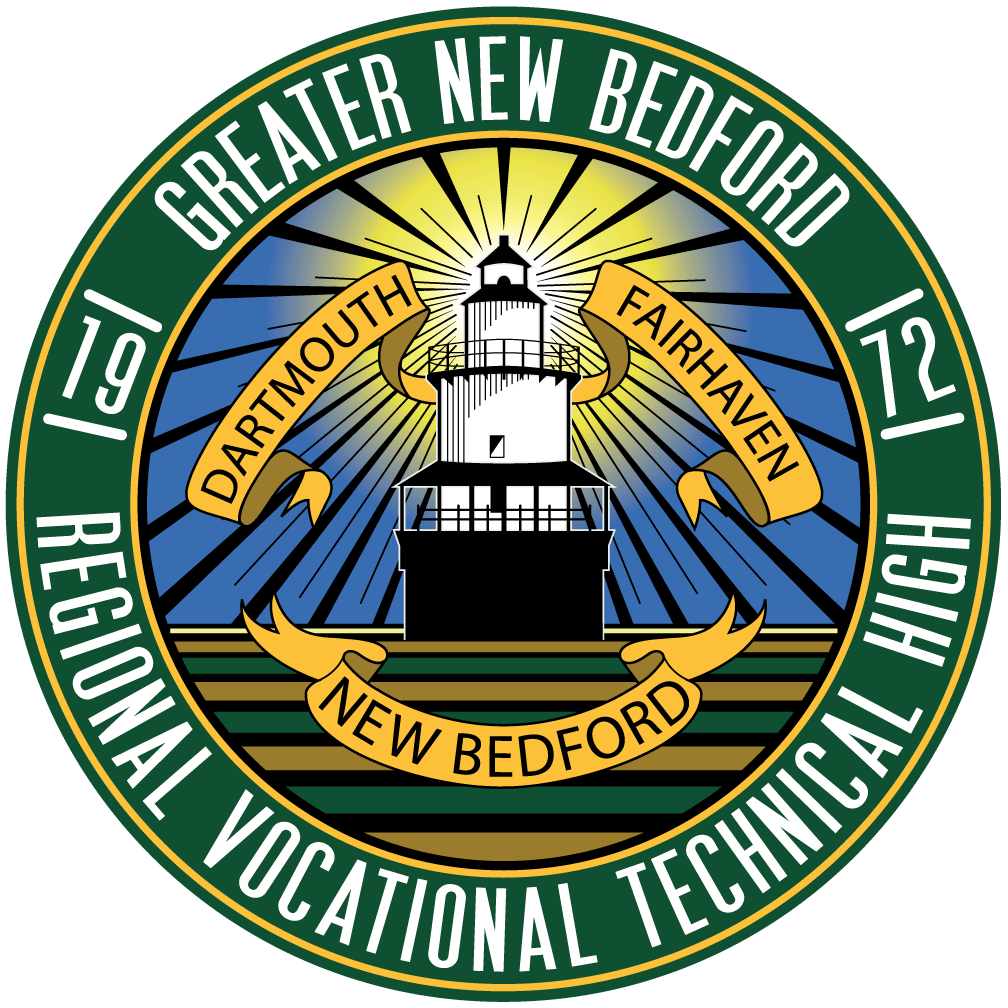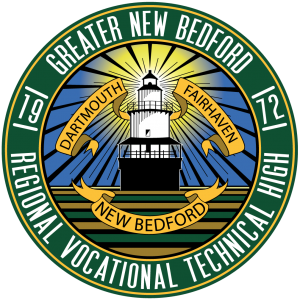2024 – 2025
Collision Repair Technology
Guy Shepherd, Academy C Administrator – Ext. 113
Course & Program of Studies
Statement of Purpose
The Auto Body Repair program at GNBRVTHS is dedicated to providing students with the skills and knowledge necessary to succeed in the automotive collision repair industry. Through a combination of classroom instruction and hands-on training, students will develop expertise in:
- Vehicle Damage Assessment: Evaluating vehicle damage and determining the extent of repairs needed.
- Metalworking: Using various metalworking techniques, such as cutting, bending, and welding, to repair damaged body panels.
- Paint and ReFinishing: Applying paint and other finishes to vehicles, ensuring a high-quality, durable finish.Application of PPG Enviro-Base and Solvent Paints and primers.
- Frame and Structural Repair: Repairing structural damage to vehicle frames and unibody structures.
- Electrical Systems: Diagnosing and repairing electrical systems, including wiring harnesses and electronic components.
- Estimating and Insurance: Preparing accurate repair estimates and dealing with insurance claims. Using the Mitchells Estimating Software System
By the end of the program, students will be well-prepared to enter the workforce as skilled auto body technicians. They will have the knowledge and skills to work in a variety of automotive repair settings, including collision repair shops, dealerships, and independent repair facilities.
Exploratory Program
The Freshman Auto Body Repair Exploratory program provides an introduction to the exciting world of automotive collision repair. Students will gain hands-on experience with basic collision repair techniques, including:
- Safety: Understanding and practicing safety procedures in the auto body shop.
- Tool Usage: Learning to use hand tools and power tools safely and effectively including stencil work to complete custom designs and refinishing
- Painting and Finishing: Learning about painting techniques, including masking, priming, and applying paint using the SIM Virtual Spray System and a Mini Spray gun to produce a customized painted project to take home.
Freshman Program
The Freshman Auto Body Repair program provides a solid foundation in the fundamentals of automotive collision repair. Key areas of focus include:
- Safety: Prioritizing safety in the shop environment, including the proper use of personal protective equipment (PPE) and understanding safety regulations.
- Tool Usage: Learning to use hand tools and power tools safely and effectively.
- Paint and Finishing: Understanding the basics of painting and finishing techniques, including masking, priming, and applying paint.
- Minor Dent Repair: Using techniques to repair minor dents and dings.
- Vehicle Damage Assessment: Evaluating vehicle damage and determining the extent of repairs needed.
By the end of the freshman year, students will have a solid understanding of the automotive collision repair process and be prepared to advance to more complex tasks in their sophomore year.
Sophomore Program
The Sophomore Auto Body Repair program builds upon the foundational skills acquired in the freshman year. Key areas of focus include:
- Metalworking: Using various metalworking techniques to repair damaged body panels, including cutting, bending, and welding.
- Body Filler Application: Applying body filler to repair dents and imperfections in body panels.
- Painting and Refinishing: Preparing surfaces for painting, mixing paint, and applying paint and clear coat finishes.
- Small Dent Repair: Learning techniques to repair minor dents without the need for body filler and paint.
Through hands-on training and real-world projects, students will gain valuable experience in the collision repair process and be prepared for advanced training in their junior and senior years.
Sophomore Related Class 1
Students learn about refinishing and advanced MIG welding, aluminum welding and repair, and advanced spray equipment. Students also gain knowledge of the history in collision and frame construction, analysis and repair of metal damage, including panel replacement, and spraying of both color and clear coats.

Sophomore Related Class 2
Math Related
Collision Technology Sophomore Grade MATH RELATED is one period per day for 90 days in length, which is 15 6-day cycles. The student will learn the technical math required for entry-level employment and or post-graduate study. Instructions include fractions, decimals, percent, measuring, volume, ratios, and finance. Additional reinforcement is practiced through applying related math knowledge in shop live work assignments. Students will accumulate approximately 90 hours of training. Mathematics is an essential life skill-a skill just as important as the ability to read and write. Understanding and applying math skills provides the basis for learning and mastering occupational and technical subjects. By studying and learning from Applied Mathematics, you will promote your understanding of one of the basics of technology and advance your potential for successful achievement in technical fields.
Junior Program
The 11th-grade curriculum provides students with a more in-depth knowledge of collision repair and automotive refinishing techniques using state-of-the-art water-based paint on live customer jobs. Students will analyze and repair areas of damage, including plastic repair, paint theory tinting and blending, color matching, and specialty painting. Students will demonstrate how to read and write an estimate on a damaged vehicle.
Students will learn about advanced welding, including I-Car aluminum welding, factory spot welding, and panel sectioning with I-Car structure repair panel. Students will also have a chance to participate in ASE junior certification and I-CAR welding qualification test.
Junior Related 1
Collision Repair & Estimating Lab
This course is developed to teach students the necessary skills that they will need to be successful in all aspects of their professional lives. Utilizing I-CAR Advanced Tech Curriculum and the NATEF ASE Auto Collision Repair and Refinishing Textbook, students will learn how to write an estimate. The aspects of an estimate include how an auto body shop makes money, via labor rates and part and material sales. Students will also learn how to get ASE certified and continue their education in the industry by keeping up with their ASE and I-CAR certifications.

Junior Related 2
Structural & Non-Structural Theory
Students will be able to Explain the different vehicle classifications, list the materials used to construct the automotive body, identify the major assemblies of an automotive body, summarize the vehicle production process, and describe vehicle safety ratings. Students will be able to identify the parts of the steering and suspension systems, list the function of the parts of the steering and suspension system parts by inspection or measurement, detect damaged steering and suspension system parts by inspection or measurement, explain how to remove and install various steering and suspension parts, define wheel alignment terms, list the steps of a wheel alignment.
Students will be able to identify electrical system components, understand current flow, diagnose an electrical system problem, remove and replace electrical system components. Students will be able to understand the function of the brake system and its component parts, identify brake system wear and damage, remove and replace damaged or worn parts. Students will be able to list the parts of the cooling, heating, and air conditioning systems, explain the function of cooling, heating, and air conditioning system parts, explain how the cooling, heating, and air conditioning systems work, identify damage or wear on cooling, heating, and air conditioning system parts, replace various cooling, heating, and air conditioning system parts. Students will be able to name and explain the function of power train components, identify damaged power train components, explain how to remove and replace damaged engine and drivetrain components. Students will be able to list the different types of restraint systems and their components, explain the differences and functions of active and passive restraint systems, describe the two types of airbag systems, explain the function of the different impact sensors, diagnose restraint system problems, identify and know how to replace restraint system components, Understand the safety procedures and inherent dangers of servicing restraint system components.
Senior Program
The 12th-grade program provides the student with complete coverage of advanced auto body repair, as well as the most advanced types of paints used, and proper application methods. Other areas covered in this course include analysis and repair of major collision damage, determining when to repair or replace parts, estimating and preparing for job interviews. Co-op program is available to all seniors who qualify.
Senior Related 1
Collision Uni-Body & Frame Theory
Auto collision repair for both minor and major damage, I-CAR and auto collision repair curriculum, provides students with the most up-to-date information on paints used in the industry, as well as methods of application and troubleshooting paint problems. Analyzing major collision damage and when to repair or replace parts, estimation preparation, and preparing for job interviews and career success are included in Grade 12 related theory classes. Utilizing the I-CAR Advanced Tech Curriculum, students gain skills in metal straightening, unitized body and frame alignment and straightening, welding, and full frame repair. Students will be proficient in understanding the importance of repairing vehicle dimensions to OEM specifications and the tools and equipment necessary to do so.
Senior Related 2
Collision Repair Tech Lab – Elective
Utilizing the Next Gen Personal Finance Curriculum, students gain skills in everyday life such as Taxes, Paystubs, Checking and Savings accounts, and much more. Students learn all phases of personal finance in the modern era.
It is essential for students to understand the common finances of life so once they graduate, they have one step forward of the rest. Students will understand different types of insurance, Buying a Vehicle, Renting an Apartment, Buying a House, How to create a Budget, just to name a few.
Certifications
- Painting and Refinishing
- Non–Structural Analysis and Damage Repair
- Structural Analysis and Repair
- Mechanical and Electrical Components
- I-CAR Welding Qualification
- ASE (Automotive Service Excellence) Junior Certification – One year trade credit towards two year requirement.
- OSHA 10 Certification
Career Opportunities
- Paint Technician
- Auto Body Repair Technician
- Frame Repair Technician
- Parts Person
- Insurance Estimating
- Automotive Detailing
- Dealer Prep Person
- Commercial Coating Painter



